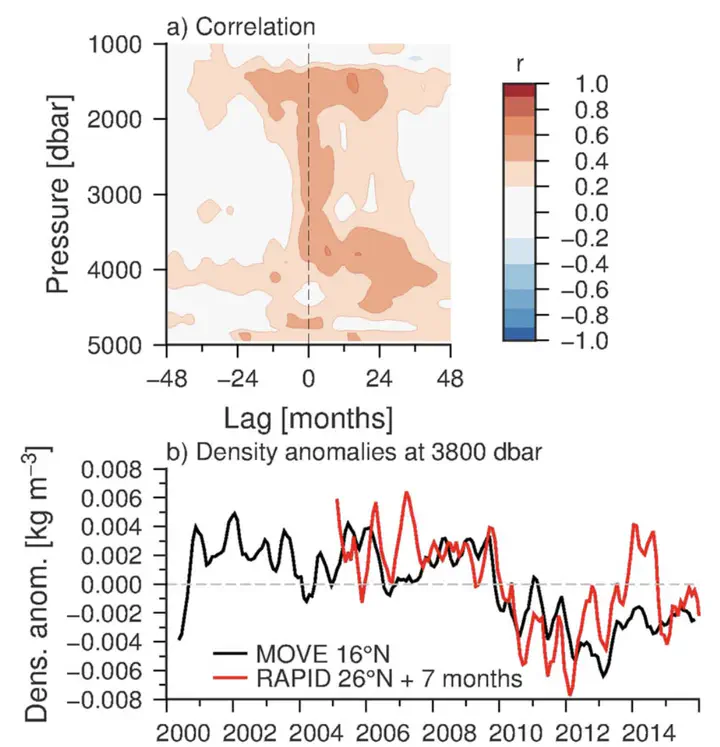Coherent circulation changes in the Deep North Atlantic from 16°N and 26°N transport arrays
 Lag-correlation between density anomalies at different latitudes but the same depth. (a) Correlation coefficient between density anomalies at the western boundaries of MOVE 168N and RAPID 268N, as a function of depth (y axis) and lag in months (x axis). (b) Time series of density anomalies at the two latitudes, at 3,800 dbar. The density time series from RAPID 268N has been shifted forward in time by 7 months. Positive lag corresponds to 268N leading 168N.
Lag-correlation between density anomalies at different latitudes but the same depth. (a) Correlation coefficient between density anomalies at the western boundaries of MOVE 168N and RAPID 268N, as a function of depth (y axis) and lag in months (x axis). (b) Time series of density anomalies at the two latitudes, at 3,800 dbar. The density time series from RAPID 268N has been shifted forward in time by 7 months. Positive lag corresponds to 268N leading 168N.
Abstract
The meridional overturning circulation (MOC) has been measured by boundary arrays in the Atlantic since 2000. Over the past decade of measurements, however, the reported tendencies in overturning circulation strength have differed between 16N and 26N. Here, we investigate these differences by diagnosing their origin in the observed hydrography, finding that both arrays show deep waters (below 1100 dbar) at the western boundary becoming fresher and less dense. The associated change in geopotential thickness is about 0.15 m2/s2 between 2004-2009 and 2010-2014, with the shift occurring between 2009- 2010 and earlier at 26N than 16N. In the absence of a similar density change on the east of the Atlantic, this mid-depth reduction in water density at the west would drive an increase in the shear between the upper and lower layers of North Atlantic Deep Water of about 2.6 Sv at 26N and 3.9 Sv at 16N. These transport anomalies result in an intensifying tendency in the MOC estimate at 16N, but at 26N, the method of correcting the geostrophic reference level results in an opposing (reducing) tendency of the MOC. The results indicate that both arrays are observing coherent, low frequency changes, but that there remain discrepancies in the methods of addressing the geostrophic reference level for boundary arrays measuring ocean circulation.